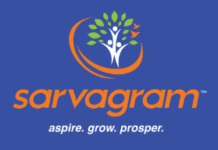
In the world of marketing, there are two main categories: B2B (Business-to-Business) and B2C (Business-to-Consumer). Although both models involve promoting and selling products or services, the strategies, communication styles, and customer expectations vary greatly. Understanding these differences is essential for developing successful campaigns that reach the right audience and produce measurable results. In this detailed article, we’ll explain how B2B marketing is different from B2C, explore their unique brand-building methods, and discuss what makes each sales approach distinct.
What is B2B vs. B2C?
B2B (Business-to-Business) involves transactions between businesses. One company sells a product or service to another company. Examples include software providers, marketing agencies, or manufacturers selling machinery to factories. On the other hand, B2C (Business-to-Consumer) involves selling directly to individual consumers. Examples include e-commerce stores, fast food chains, or clothing retailers. Each model requires a unique marketing approach tailored to the buying behavior and expectations of its specific audience.
Brand Building: Trust vs. Emotion
In B2B, brand building is about establishing trust and authority. B2B buyers are professionals who make decisions based on logic, ROI (Return on Investment), and long-term value. Therefore, B2B branding focuses on building trust, credibility, and expertise. To build a strong B2B brand, businesses often share case studies and client testimonials, publish white papers, eBooks, and industry reports, provide detailed product information and demo sessions, and build thought leadership through webinars, podcasts, and guest articles.
In contrast, B2C brand building focuses on emotional and visual branding. Purchasing decisions in B2C are more emotional. Brand loyalty is built by creating a strong emotional connection with the audience. B2C brand strategies include storytelling and lifestyle-based content, eye-catching visual designs and product imagery, creative advertising that triggers feelings of joy, excitement, or comfort, and influencer marketing and social media engagement.
Marketing Strategy: Education vs. Attraction
B2B marketing is educational and informative. The goal is to educate potential buyers about how the product or service solves their problem or improves their business. Common B2B marketing methods include content marketing via blogs, newsletters, and whitepapers; email marketing campaigns tailored to client interests; Search Engine Optimization (SEO) focused on long-tail keywords and industry-specific terms; and webinars, LinkedIn marketing, and lead generation tools.
B2C marketing, however, is creative and engaging. It is about grabbing attention fast. Consumers have short attention spans, so the marketing must be fun, engaging, and easy to digest. B2C strategies involve short videos, memes, and reels; social media campaigns across Instagram, Facebook, and TikTok; flash sales, discounts, and limited-time offers; and emotional ads and influencer partnerships.
Sales Cycle: Long vs. Short
B2B has a longer sales process. B2B sales often take weeks or months. Buyers require time to evaluate, compare, and get internal approvals. The B2B sales cycle includes initial lead generation and nurturing, discovery meetings and product demos, price negotiation and proposal submissions, and internal reviews and final decision-making.
B2C sales are fast and impulse-driven. A customer may see an ad, click on a product, and complete the purchase within minutes. B2C sales are supported by user-friendly eCommerce platforms, one-click payments and fast checkouts, product reviews and social proof, and limited-time offers that encourage impulse buys.
Target Audience: Teams vs. Individuals
B2B targets multiple stakeholders. In B2B, a purchasing decision usually involves several people, such as finance and procurement teams, IT departments, and business owners or senior executives. Each stakeholder has unique concerns. Therefore, marketing must speak to all of them and highlight benefits like efficiency, ROI, and security.
B2C targets end users. B2C marketing focuses on a single decision-maker—the consumer. Marketers target buyers based on personal needs, preferences, and lifestyle. Messaging is more personal and often less technical.
Content Types: Technical vs. Visual
B2B content is data-driven. B2B buyers want facts, statistics, and expert advice. Popular content formats include technical blog posts, in-depth product guides, ROI calculators and comparison sheets, and whitepapers and eBooks.
B2C content is fun and friendly. It needs to be quick and visually appealing. The goal is to entertain, inform, or inspire. Formats include videos, GIFs, and memes; social media posts and contests; how-to tutorials; and user-generated content.
Customer Relationships: Long-Term vs. Short-Term
B2B is relationship-driven. B2B businesses rely on long-term partnerships. Customer retention is key, and relationships are maintained through regular follow-ups, dedicated account managers, customized solutions and service packages, and ongoing support and check-ins.
B2C is more transactional. While loyalty programs help, many consumers shop around for deals. B2C companies work hard to increase repeat purchases using loyalty points, email promotions, app notifications, and seasonal offers.
Pricing Strategy: Flexible vs. Fixed
B2B pricing is customized. Prices in B2B depend on contract size, service level, and product complexity. Negotiations are common, and businesses may offer volume discounts, annual subscription deals, and customized service packages.
B2C pricing is transparent. Consumers prefer clear and consistent pricing. Discounts may be offered during special events or sales, but prices are generally non-negotiable.
Communication Channels
B2B marketers prefer formal channels such as LinkedIn, email, business websites and webinars, and industry forums and trade publications.
B2C brands thrive on casual platforms like Instagram and TikTok, Facebook and Pinterest, YouTube, and email newsletters.
In summary, B2B and B2C marketing and sales differ in many key ways—from how you build a brand to how you close a deal. In B2B, the emphasis is on trust, education, and long-term value. In B2C, it’s all about emotion, quick engagement, and convenience. Companies that understand these differences can create powerful campaigns that resonate with their audience, strengthen their brand, and drive growth.


































